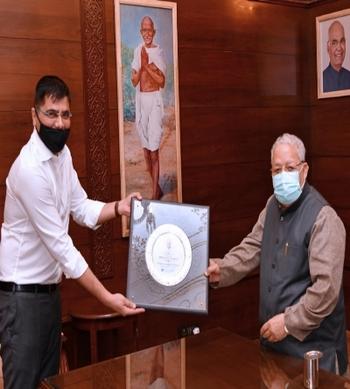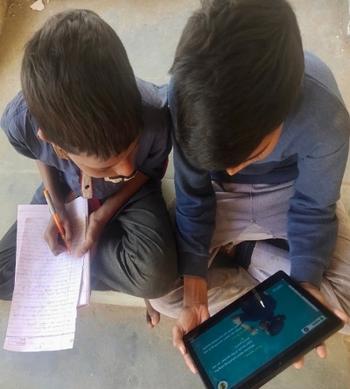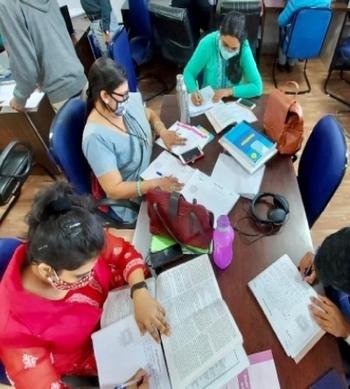CBSE Class 9 Maths Syllabus 2022 - 2023
CBSE Class 9 Maths Syllabus 2023: CBSE Class 9 students can download the rationalised CBSE Syllabus of Class 9 Mathematics for the current academic session 2022-23 here. Due to recent syllabus revisions, a few chapters and topics have been reduced for annual assessment. As a result, while reading the chapters from the Maths textbook, students must be aware of the deleted portion of the syllabus and study in accordance with the updated CBSE Class 9 Maths Syllabus. Check out the whole syllabus below for an in-depth look at the subject.
Skip to
CBSE Class 9 Maths Syllabus 2022 - 2023
Unit No | Unit | Marks |
1 | NUMBER SYSTEMS | 10 |
2 | ALGEBRA | 20 |
3 | COORDINATE GEOMETRY | 04 |
4 | GEOMETRY | 27 |
5 | MENSURATION | 13 |
6 | STATISTICS & PROBABILITY | 06 |
TOTAL | 80 |
Download Class 9th Maths Syllabus
UNIT 1: NUMBER SYSTEMS
1. REAL NUMBERS
1. Review of representation of natural numbers, integers, and rational numbers on the number line. Rational numbers as recurring/ terminating decimals. Operations on real numbers.
2. Examples of non-recurring/non-terminating decimals. Existence of non-rational numbers (irrational numbers) such as √2, √3 and their representation on the number line. Explaining that every real number is represented by a unique point on the number line and conversely, viz. every point on the number line represents a unique real number.
3. Definition of nth root of a real number.
4. Rationalization (with precise meaning) of real numbers of the

and their combinations) where x and y are natural number and a and b are integers.
5. Recall of laws of exponents with integral powers. Rational exponents with positive real bases (to be done by particular cases, allowing learner to arrive at the general laws.)
UNIT 2: ALGEBRA
1. POLYNOMIALS
Definition of a polynomial in one variable, with examples and counter examples. Coefficients of a polynomial, terms of a polynomial and zero polynomial. Degree of a polynomial. Constant, linear, quadratic and cubic polynomials. Monomials, binomials, trinomials. Factors and multiples. Zeros of a polynomial. Motivate and State the Remainder Theorem with examples. Statement and proof of the Factor Theorem. Factorization of ax2 + bx + c, a ≠ 0 where a, b and c are real numbers, and of cubic polynomials using the Factor Theorem. Recall of algebraic expressions and identities. Verification of identities:

2. LINEAR EQUATIONS IN TWO VARIABLES
Recall of linear equations in one variable. Introduction to the equation in two variables. Focus on linear equations of the type ax + by + c=0.Explain that a linear equation in two variables has infinitely many solutions and justify their being written as ordered pairs of real numbers, plotting them and showing that they lie on a line.
UNIT 3: COORDINATE GEOMETRY COORDINATE GEOMETRY
The Cartesian plane, coordinates of a point, names and terms associated with the coordinate plane, notations.
UNIT 4: GEOMETRY
1. INTRODUCTION TO EUCLID'S GEOMETRY
History - Geometry in India and Euclid's geometry. Euclid's method of formalizing observed phenomenon into rigorous Mathematics with definitions, common/obvious notions, axioms/postulates and theorems. The five postulates of Euclid. Showing the relationship between axiom and theorem, for example: (Axiom)
1. Given two distinct points, there exists one and only one line through them. (Theorem)
2. (Prove) Two distinct lines cannot have more than one point in common.
2. LINES AND ANGLES
1. (Motivate) If a ray stands on a line, then the sum of the two adjacent angles so formed is 180O and the converse.
2. (Prove) If two lines intersect, vertically opposite angles are equal.
3. (Motivate) Lines which are parallel to a given line are parallel.
3. TRIANGLES
1. (Motivate) Two triangles are congruent if any two sides and the included angle of one triangle is equal to any two sides and the included angle of the other triangle (SAS Congruence).
2. (Prove) Two triangles are congruent if any two angles and the included side of one triangle is equal to any two angles and the included side of the other triangle (ASA Congruence).
3. (Motivate) Two triangles are congruent if the three sides of one triangle are equal to three sides of the other triangle (SSS Congruence).
4. (Motivate) Two right triangles are congruent if the hypotenuse and a side of one triangle are equal (respectively) to the hypotenuse and a side of the other triangle. (RHS Congruence)
6. (Motivate) The sides opposite to equal angles of a triangle are equal.
4. QUADRILATERALS
1. (Prove) The diagonal divides a parallelogram into two congruent triangles.
2. (Motivate) In a parallelogram opposite sides are equal, and conversely.
3. (Motivate) In a parallelogram opposite angles are equal, and conversely.
4. (Motivate) A quadrilateral is a parallelogram if a pair of its opposite sides is parallel and equal.
5. (Motivate) In a parallelogram, the diagonals bisect each other and conversely.
6. (Motivate) In a triangle, the line segment joining the mid points of any two sides is parallel to the third side and in half of it and (motivate) its converse.
5. CIRCLES
1. (Prove) Equal chords of a circle subtend equal angles at the center and (motivate) its converse.
2. (Motivate) The perpendicular from the center of a circle to a chord bisects the chord and conversely, the line drawn through the center of a circle to bisect a chord is perpendicular to the chord.
3. (Motivate) Equal chords of a circle (or of congruent circles) are equidistant from the center (or their respective centers) and conversely.
4. (Prove) The angle subtended by an arc at the center is double the angle subtended by it at any point on the remaining part of the circle.
5. (Motivate) Angles in the same segment of a circle are equal.
6. (Motivate) If a line segment joining two points subtends equal angle at two other points lying on the same side of the line containing the segment, the four points lie on a circle.
7. (Motivate) The sum of either of the pair of the opposite angles of a cyclic quadrilateral is 180° and its converse.
UNIT 5: MENSURATION
1. AREAS
Area of a triangle using Heron's formula (without proof)
2. SURFACE AREAS AND VOLUMES
Surface areas and volumes of spheres (including hemispheres) and right circular cones.
UNIT 6: STATISTICS & PROBABILITY
1. STATISTICS
Bar graphs, histograms (with varying base lengths), and frequency polygons
Conclusion
In conclusion, the CBSE Class 9 Mathematics syllabus is designed to provide students with a strong foundation in mathematical concepts and problem-solving skills. It covers various topics such as number systems, algebra, geometry, statistics, and probability. The syllabus aims to enhance students' critical thinking, logical reasoning, and analytical skills, which are essential for higher-level mathematics. By studying the Class 9 Maths syllabus, students develop a solid understanding of mathematical principles that will be beneficial in their academic journey.
FAQs
Q1: What are the main topics covered in the CBSE Class 9 Maths syllabus?
A1: The main topics covered in the CBSE Class 9 Maths syllabus include number systems, algebraic expressions, linear equations in two variables, geometry, coordinate geometry, mensuration, statistics, and probability.
Q2: Are the topics in the Class 9 Maths syllabus important for higher classes?
A2: Yes, the topics covered in the Class 9 Maths syllabus are foundational and form the basis for advanced mathematical concepts in higher classes. It is crucial to understand and master these topics to excel in future math courses.Q3
Q3: How can I effectively prepare for the Class 9 Maths exams?
A3: To prepare for the Class 9 Maths exams, it is important to understand the concepts thoroughly. Practice regularly by solving problems from textbooks, sample papers, and previous years' question papers. Seek help from teachers or classmates whenever necessary.
Q4: Is it necessary to memorize formulas in Class 9 Maths?
A4: While understanding the concepts is crucial, it is also important to memorize key formulas in mathematics. Formulas help in solving problems efficiently. Practice using formulas so that you can apply them correctly during exams.Q5: Are there any practical applications of the concepts studied in Class 9 Maths? A5
Download CBSE Class 9th Syllabus PDF

MissionGyan Team
We aim to eradicate the education gap and serve equal and free education to all with the help of skilled and expert volunteers and teachers.





